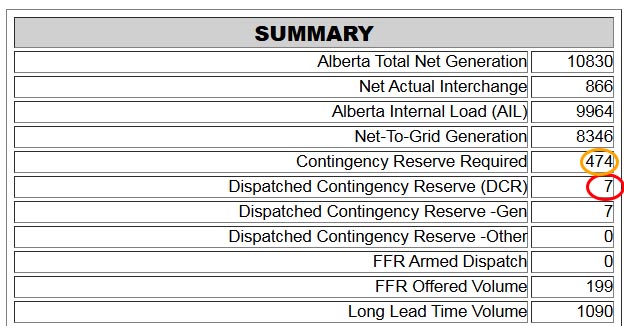Brian Zinchuk is editor and owner of Pipeline Online

Saturday and Sunday, Oct. 18 and 19 have seen strong wind output on the Alberta electrical grid. And the result on Sunday, as is typical when this happens, is free power for the neighbours.
As of noon on Sunday there had been three hours of the Alberta Electric System Operator pool price hitting zero dollars, and several more under $5 per megawatts. And with the interties to British Columbia now up and running after maintenance last month, BC was taking in 829, 892 and 843 megawatts for free from 5 a.m. to 8 a.m. Montana was cashing, too, but to a lesser extent as it as a much smaller capacity on its intertie. For those three hours, Montana took in 102, 38 and 930 megawatts, again, for free. Saskatchewan’s intertie is expected to be back online in the coming days, but it is still down, so the flatlanders weren’t able to cash in on the free power bonanza.
At the time of writing, at 1 p.m. on Sunday, the AESO pool price had again hit zero dollars. That’s even less than Quebec gots its power from Newfoundlan’s Churchill Falls ($2 per megawatt-hour) for over 50 years until recently.
It’s a pattern Pipeline Online has reported on numerous times. When power is surplus, usually with wind over 50 per cent capacity, the pool price drops to zero and Alberta’s neighbours cash in on the free power to the maximum extent possible. In this case, at 5 a.m., wind was at 56.9 per cent capacity, then 58 per cent, then 56.8 per cent at 7 a.m. Solar was off the board until 7 a.m., when it freaced 2.8 per cent capacity as the sun rose.
These numbers are from the AESO, as logged by X account @ReliableAB. On X, updates are posted ever two hours, but you can find the hourly updates on this site by @ReliableAB.

The Dispatched Contingency Reserve, highlighted in red, should never fall below the Contingency Reserve Required, in orange. This was at 1:36 p.m. on Saturday, Oct. 18. Alberta Electric System Operator
Also, at 1:36 p.m. on Oct. 18, Alberta’s dispatched contingency reserve fell dangerously low, to just 7 megawatts, when the requirement was for over 474.
According to North American Electric Reliability Corporation (NERC) guidelines, at least 4 per cent of demand is supposed to be available in a dispatched contingency reserve (DCR). If that goes to zero, and demand outstrips supply, the grid’s frequency can drop. If it goes too low for too long, individual components of the grid can automatically disconnect themselves, resulting in a cascading failure similar to what happened in Spain and Portugual earlier in 2025.
The AESO did not declare a grid alert at that time, nor did this event show up on its event log.
The curious thing is that this drop in dispatched contingency reserve occurred while Alberta was exporting 832 megawatts to BC and another 90 to Montana. There was ample wind and solar, too, with 2,116 and 1,292 megawatts respectively. The most likely cause appears to be Genesee Repower 1, with a capacity of 466 megawatts, tripped off at 12:56 p.m., according to the AESO event log.
That much power falling off almost exactly equated the required reserve. But as Alberta’s fleet of batteries responded, adding 118 megawatts to the grid at 1:36 p.m., that still means there was a greater shortfall then just Genessee 1, all the while Alberta continued to export large amounts of power.
